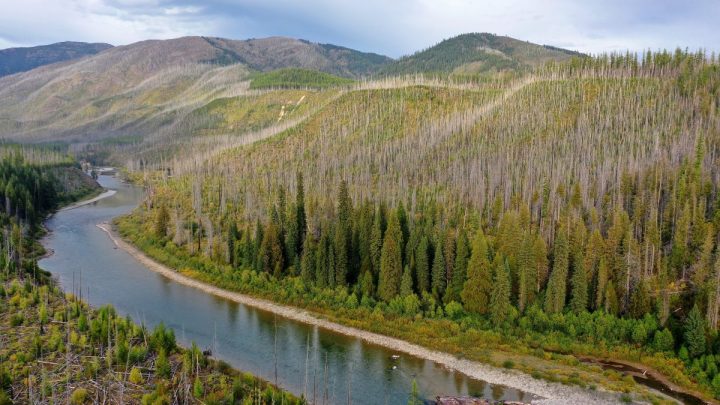
Why inflation runs hottest in the Mountain West

The Bureau of Labor Statistics releases the latest consumer price index Wednesday, a monthly read on inflation.
But that headline number will only tell part of the story, because how much more people are spending on food, housing, energy and everything else depends on where they live.
One region where inflation’s been running extra hot? The Mountain West. That includes the upper Rocky Mountain states of Montana and Wyoming, all the way down into Arizona and New Mexico.
Annual inflation peaked at over 10% last year in that part of the country. It was running at an annual rate of 6% in March, a whole percentage point higher than the national average.
The cost of housing accounts for a third of the CPI. So, it adds up that the index is running hottest in the Mountain West.
“It’s cuckoo here,” said Megan Lawson, an economist with Headwaters Economics who lives in Bozeman, Montana. “Unaffordable housing touches every aspect of the economy and life in these communities.”
Lawson said a lot of people have used the newfound flexibility of remote work to move someplace with a view. And those digital nomads can afford to spend a lot more on housing than locals.
“Places that have mountains and lakes and rivers are experiencing unprecedented increases in housing prices,” she said.
Higher housing costs mean employers have to pay higher wages.
“It’s going to increase the cost of living and make everything in these communities more expensive,” said Rod Godby, a professor of economics at the University of Wyoming.
Godby has seen evidence of that spiral in Laramie, Wyoming.
“You know, when you’re in a small town, a few people can make a difference,” he said. Another thing driving up prices in the Mountain West is energy, he said. Most of the country has felt some relief since prices surged last year, he said.
“If you look nationally, year over year, you’re looking at about a 6.5% decrease in energy costs, whereas across the Mountain West it’s probably only about a one and a half percent difference,” he said. That’s in part because of an oil refinery shutdown in Denver and some constraints on natural gas pipelines in the region.
Then there’s the water issue.
“The drought, the super drought in the West, they call it,” said John Restrepo, who heads up Las Vegas-based RCG Economics. “If, for example, you’re able to build fewer residential houses and apartments in a community because you have land and water constraints,” and there’s not enough housing to go around in your growing city, then that drives up costs, he said, and the cycle starts all over again.
There’s a lot happening in the world. Through it all, Marketplace is here for you.
You rely on Marketplace to break down the world’s events and tell you how it affects you in a fact-based, approachable way. We rely on your financial support to keep making that possible.
Your donation today powers the independent journalism that you rely on. For just $5/month, you can help sustain Marketplace so we can keep reporting on the things that matter to you.

















